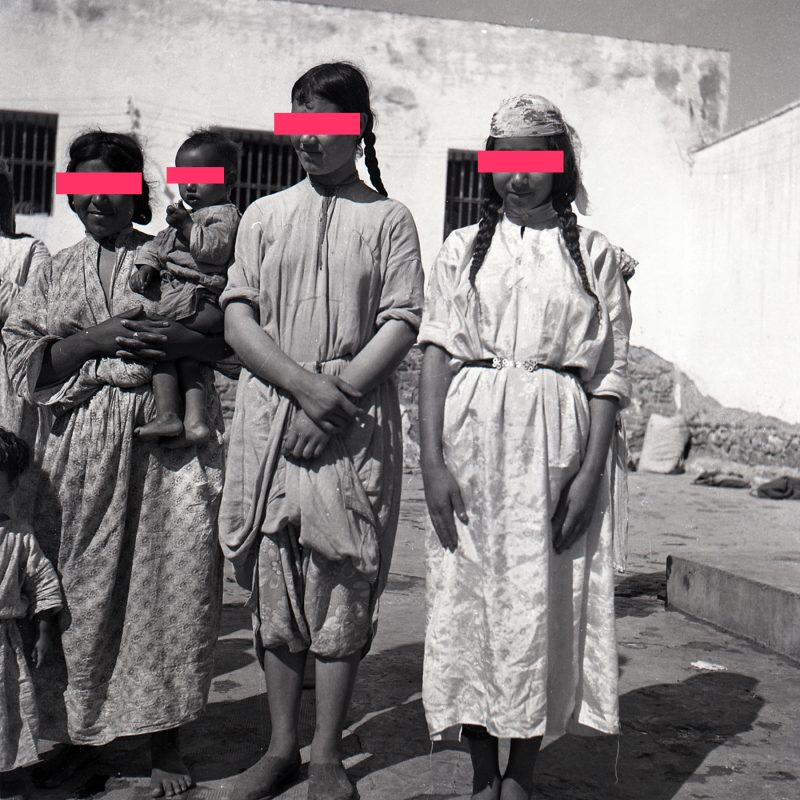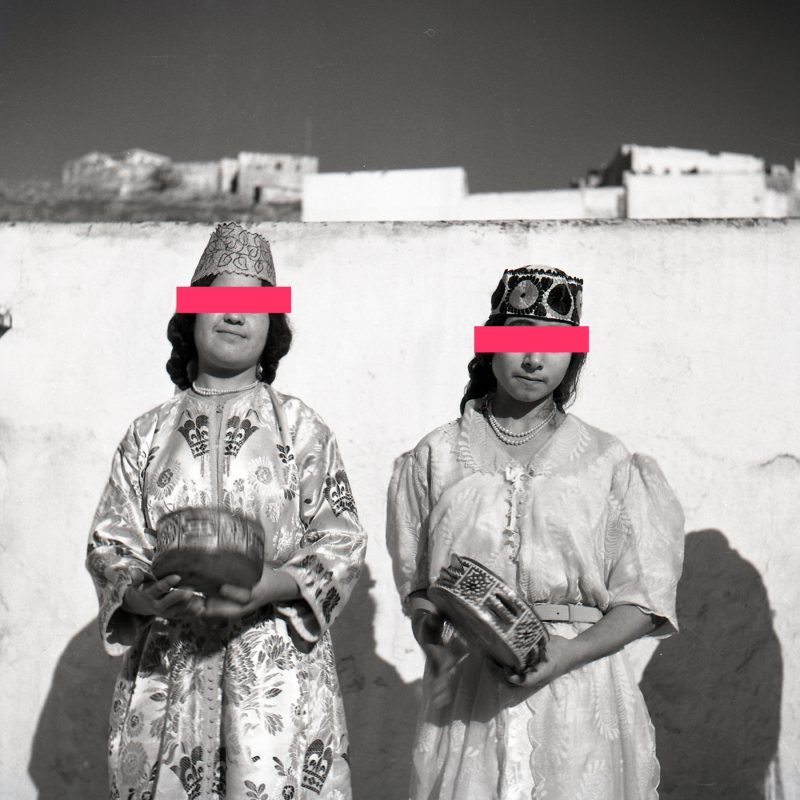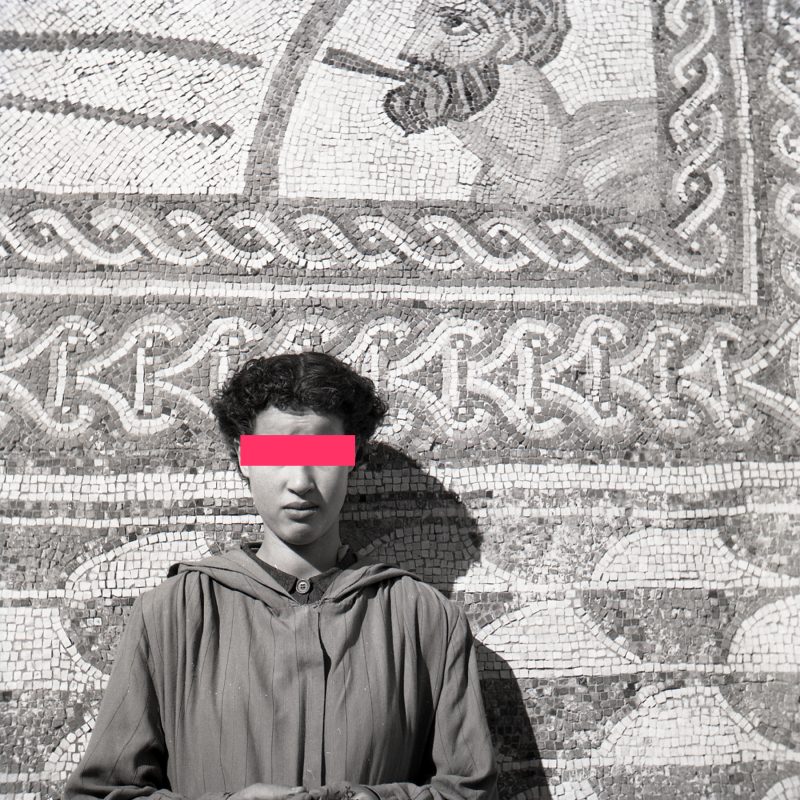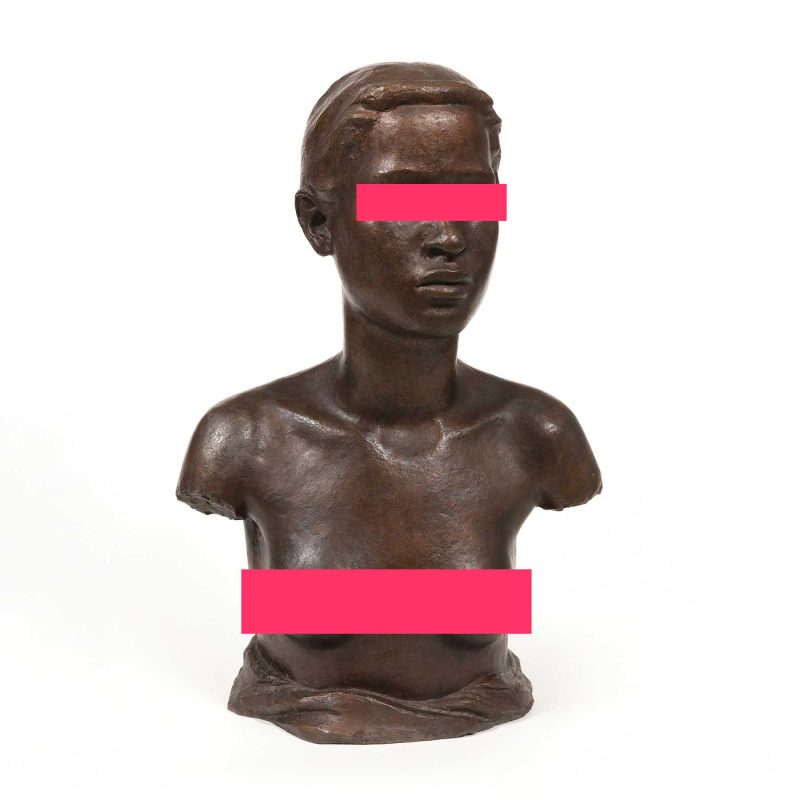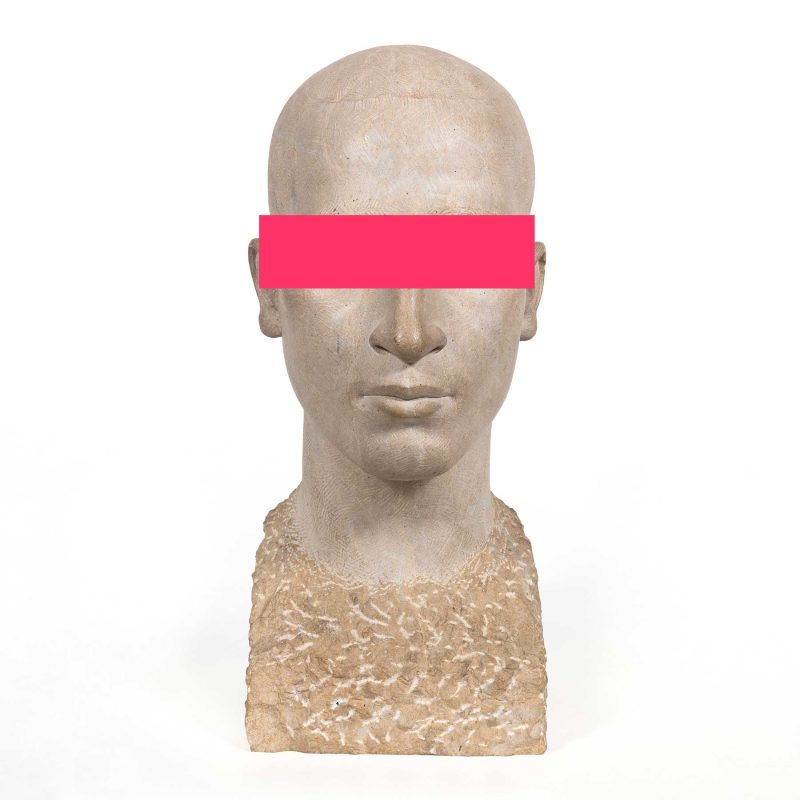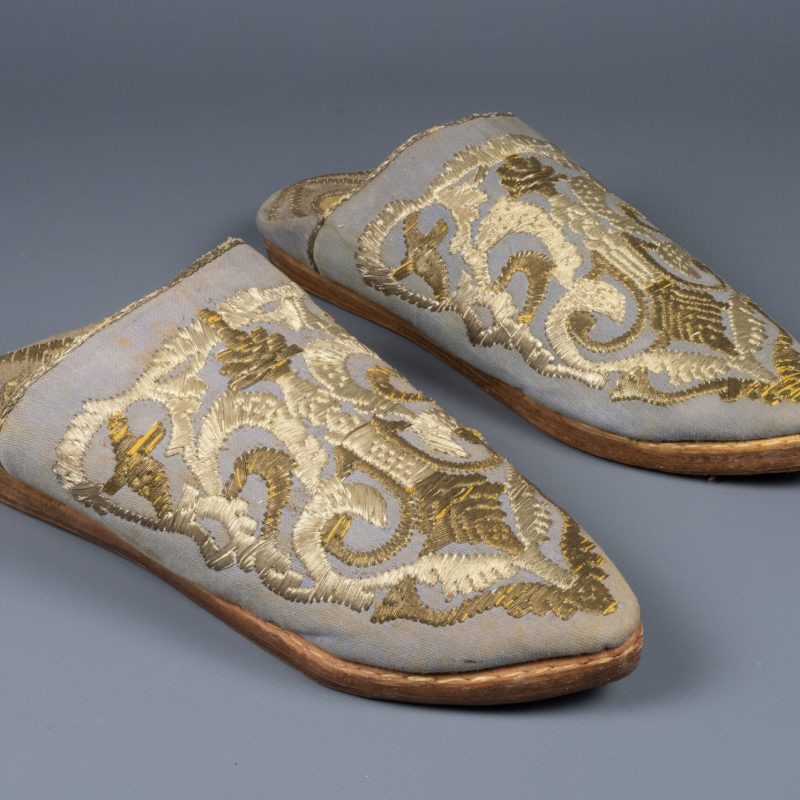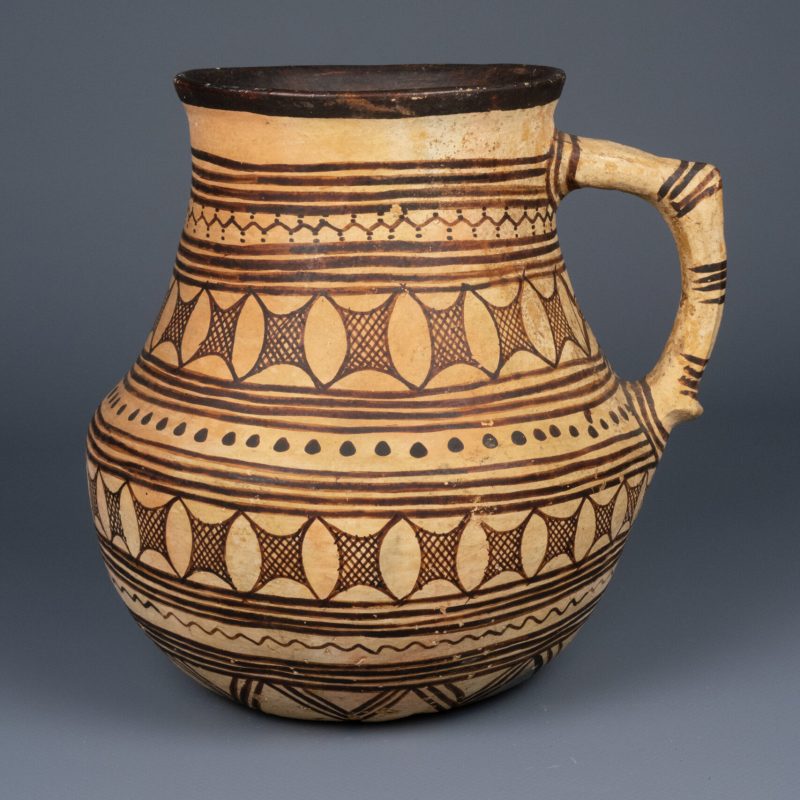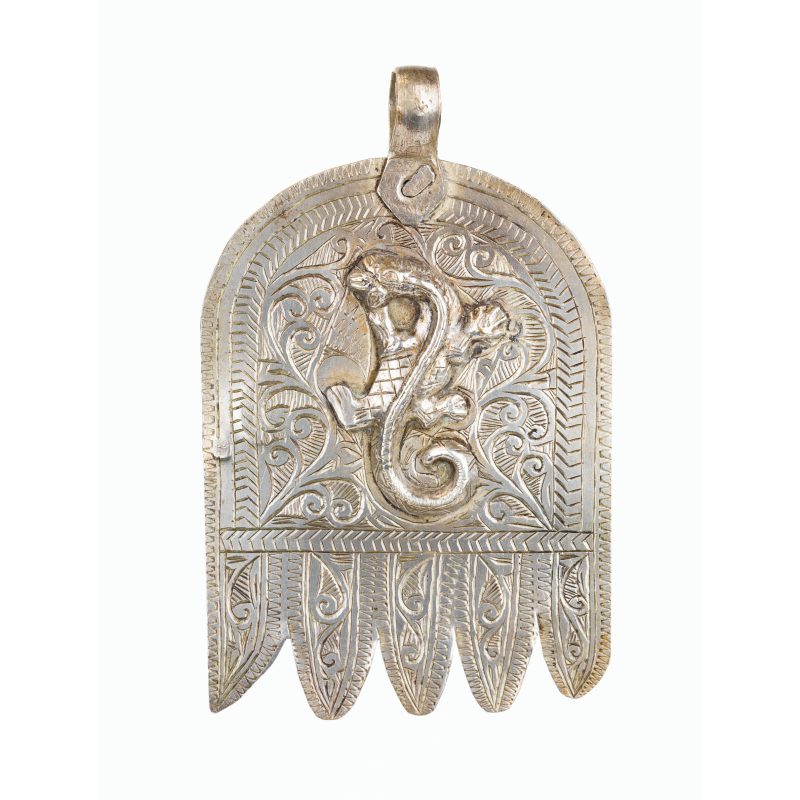Summary of results
This is a photograph taken, quite plausibly by Eudald Serra, in the prison of Nador, in the Eastern Rif, probably on 24 April 1954, as part of the second MEC expedition to the northern part of the Spanish Protectorate in Morocco. Several inmates, probably punished for having become pregnant out of wedlock, were sentenced to between two and three years, with their corresponding children. The expeditionaries made systematic use of this type of ‘total institutions’ in their search for models for Serra’s ‘anthropological sculptures’.
In the case of the person on the right of the photograph, this is a girl who would serve as a model for one of Serra’s ‘anthropological sculptures’, in this case piece no. 1550 (F001UD060-1550). We hypothesize that the girl was Fatima Hamu [sic], from the Beni Said berber tribe, as recorded in Eudald Serra’s travel journals.
Chronological reconstruction of provenance
This is a photograph of female inmates in Nador prison. Three of them appear facing the camera, a fourth, and a fifth in the background, turned, and part of the body of another inmate, plus the children of some of them. The woman on the right is particularly significant because she is the subject of one of the ‘anthropological sculptures’ that Eudald Serra made on behalf of the MEC, as can be seen in cliché no. 2671 and, above all, in piece F001UD060-1550.
Thanks to Eudald Serra’s travelogues, we have precise dates that allow us to situate the photograph and its context. In fact, in the context of the second expedition to the northern part of the Spanish Protectorate in Morocco (April 1954), Serra mentions the initial visit to the women’s prison in Nador on 23 April, through Mr. Mendoza, then director of the institution, who offered him all the necessary facilities in his search for sculptural models. Serra goes on to say that he decided on one of the female models to make a bust, and gives some details of her biography, as well as of the process of confinement, which is very significant: ‘She is from a nearby berber tribe and is there for illegitimate pregnancy, like most of them, except one called the corporal, who is there for being an accomplice in a crime that happened twelve years ago. The penalty for illegitimate pregnancy ranges from two to three years for single women and from five to seven for widows and six for divorced women’ (Serra, Travel Journals, 1947–1991).
Serra also provides valuable information to identify the date on which the photograph was taken; the following day, 24 April, he opens his diary as follows: ‘I attend nine o’clock mass and then go to the prison to continue the head. First, I try to take some photographs in the prison yard. At the moment, only a few of them want to be photographed. Afterwards, they all put on the best clothes they have and ask me to please take their pictures’ (Serra, Travel Journals, 1947–1991). We can therefore assume that the photograph in question was taken on 24 April, in the courtyard of the women’s prison in Nador.
Is there a way to follow the trail left by Serra in search of a possible identity for this intern? It is more difficult. Serra himself provides a list with the identity of his models from 1954, and the fact is that several of them could correspond to the girl who appears in the photograph and who served as a model for piece no. 1550. In any case, of all the models used, Serra only in one case states that she finished the sculpture: this was Fatima Hamu [sic], from the Beni Said berber tribe, and daughter of members of the same tribe, which is consistent with the statement that the model who had posed for the bust was from a ‘nearby berber tribe’; the Beni Said tribe actually occupied a nearby territory, to the west of Nador. In any case, this hypothesis must be taken with caution, because other identities mentioned by Serra, such as Nalima Mohamed Barcan [sic], Jamina Mimon Mohamed [sic] or Mimunt Bomedien [sic], could also fit the description (Serra, Travel Journals, 1947–1991).
In any case, the most significant aspect of the photograph, in relation to the crude description provided by Serra, is precisely the severity of the punishment to which young women who became pregnant out of wedlock were subjected, with prison sentences of two to three years. They were accompanied by any children they may have had previously or while serving their sentence.
We are not aware that the photograph in question has been used in any of the exhibitions that the MEC/MEB/MuEC has devoted to Morocco over the years. If the provenance research is correct, the photograph would have been added to the MEC collection in May 1954, like the rest of the photographs in the collection.
Estimation of provenance
Nador (in tarifit ⵏⴰⴹⵓⵕ; in Arabic الناظو), Eastern Rif, Morocco
Possible alternative classifications
The inventory should refer to the fact that the same person appears in clichés no. 2665, 2671 and piece no. 1550, and that, although provisional, we have a possible identity for the girl photographed: Fatima Hamu [sic].
As for the museographic information on the piece, the existence of the women’s prison in Nador as a place of confinement to which Eudald Serra systematically resorted in search of models for the ‘anthropological sculptures’ he made on behalf of the museum should be made clearer.
Complementary sources
Archives:
Arxiu del Museu Etnològic de Barcelona
Arxiu Panyella-Amil, caixa A7, expedient 5
MEB, L128 05 02
MEB, L128 06 07
MEB, L128 07 01
MEB L128 07 02
MEB, L128 07 06
Fundació Folch de Barcelona
Eudald Serra. Cuadernos de viaje, 1947-1991
Bibliography:
Etxenagusia Atutxa, B. (2018). La prostitución en el Protectorado español en Marruecos (1912-1956) (tesi doctoral). Barcelona: Universitat Pompeu Fabra.
Huera, C., i Soriano, D. (1991). Escultures antropològiques d’Eudald Serra i Güell. Barcelona: Fundació Folch i Ajuntament de Barcelona.
Mathieu, J., i Maury, P. H. (2013). Bousbir, la prostitution dans le Maroc colonial: ethnographie d’un quartier reserve. París: París-Méditerranée.
Mbembe, A. (2001). On the postcolony. Berkeley: University of California Press.
Taraud, C. (2003). La prostitution coloniale. Algérie, Maroc, Tunisie (1830-1962). París: Payot.
Valderrama, F. (1956). Historia de la acción cultural de España en Marruecos, 1912-1956. Tetuan: Marroquí.

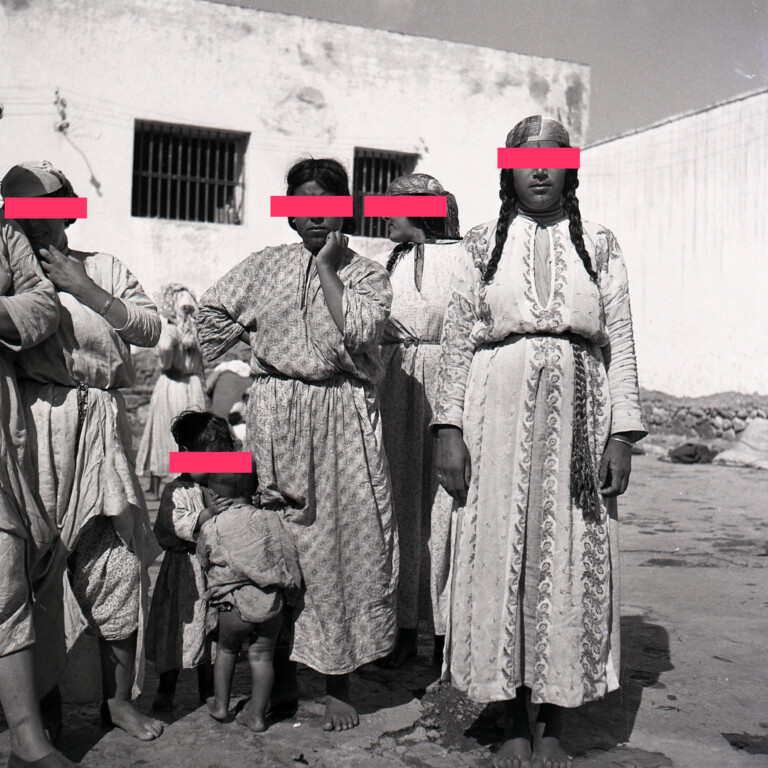
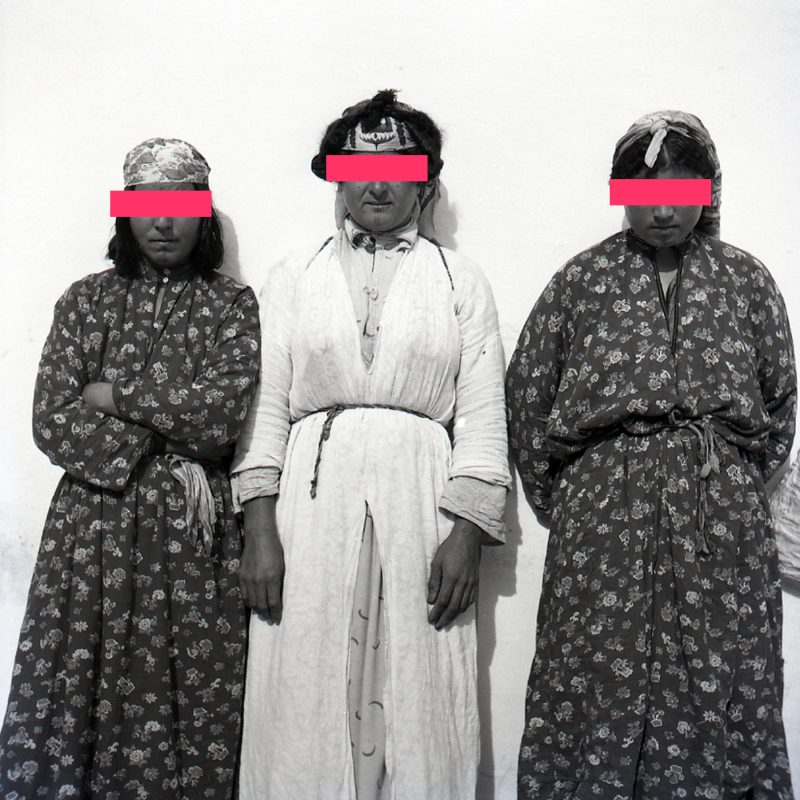
![2768v2 Sr. Serra modelant cap berber al taller del fotògraf [sic]; Xauen](https://trafricants.org/wp-content/uploads/elementor/thumbs/2768v2-1-r1s3naz0e9jpfdk332eci3myow1y18s3l4ttuptphc.jpg)
